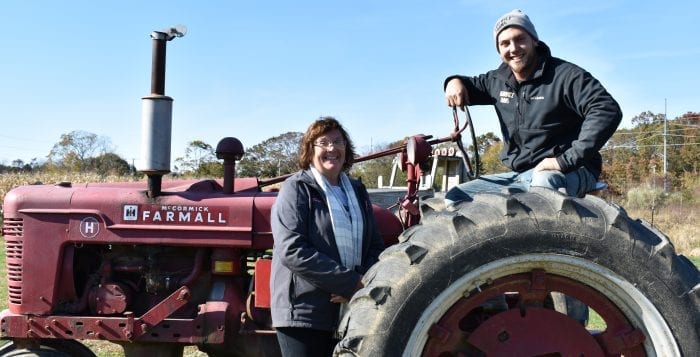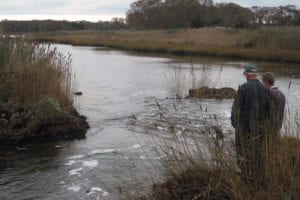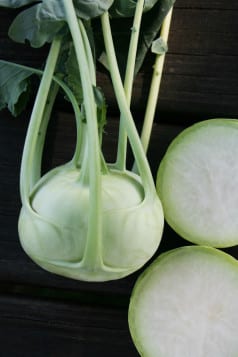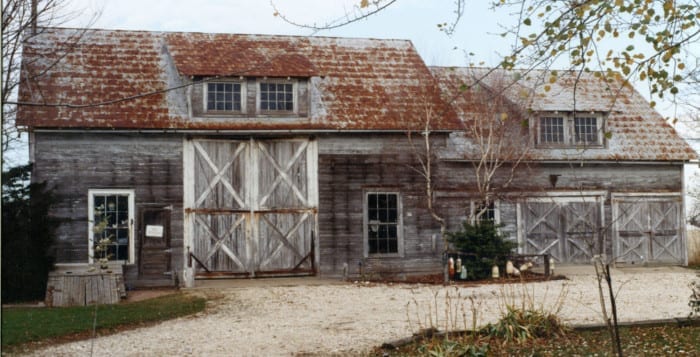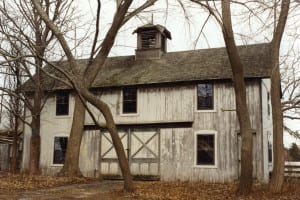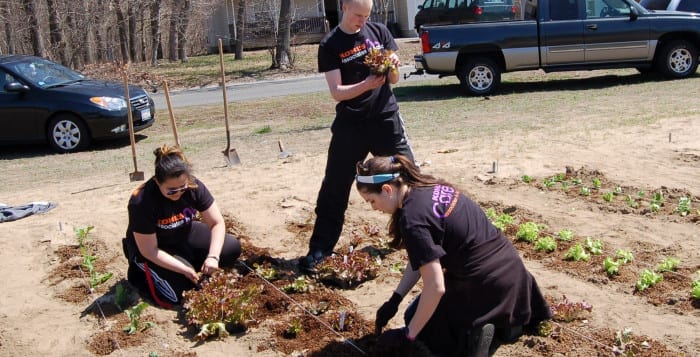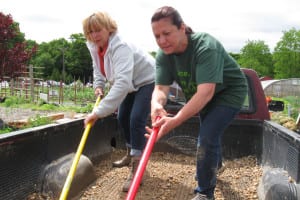In Justin Bakewicz’ eyes, the world is sepia toned. Autumn has reddened the leaves and browned the plants on his farm in Wading River. The cornstalks of the corn maze he built have gone dry and stark as gravestones, while the last few pumpkins of his you-pick patch squat among rows of now bare plants. All the farm’s last vegetables are being packed up for the remaining few farmers markets and festivals before winter truly sets in. The farm is closed until spring of next year, and he and his family have started to get ready for what could be a snowy, cold winter.
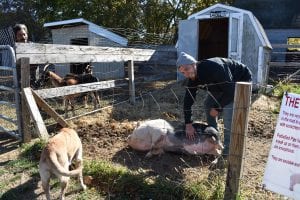
To Bakewicz, his small 11-acre farm along Route 25A in Wading River is a vintage photograph of a barn and fields, a lingering ideal he has worked for three years to make a reality.
He calls that ideal a legacy from his grandfather, Henry Kraszewski Sr. Justin, a Rocky Point resident, remembers working with his uncle on his grandfather’s farm in Southampton as a kid.
He too found solace from the drudgery of a desk job working for the U.S. Department of Agriculture in Riverhead by working on his farm, where they farmed eggs and potatoes.
“He hated that job to all hell, but when he came home at night his favorite thing to do was to take off the suit and put on his boots and jeans and farm his own potatoes out there,” the farm owner said. That farm lasted until his grandfather passed away and went out of the family’s hands.
While other kids in Danielle Donadoni’s sixth-grade English class at Joseph A. Edgar Intermediate School wrote about wanting to be sports stars, young Justin wrote about how when he grew up, he wanted to be a farmer.
Donadoni said she often visits the Bakewicz farm, saying she loves what the young farmer has brought to the community and how he has even left an imprint on her own children with a love for gardening and raising chickens.
“I remember asking him specifically, ‘What do you like about being a farmer?’” the teacher said. “I remember him telling me an uncle had a farm and it was right about this time of year. I may have given him a ‘Get out of here’ comment and ‘No way you’re working on a farm every weekend.’ Sure enough, that next Monday morning Justin exited the school bus with a pumpkin almost the size of him.”
Getting to where the farm is now was difficult. Already running a landscaping business and selling flowers out of their landscape yard, the Bakewicz family learned about the small patch of land for rent off Route 25A owned by Joe Manzi, of Rocky Point-based Manzi Homes East.
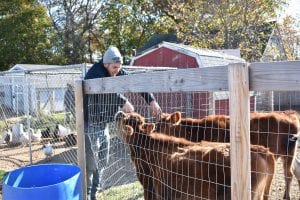
Justin’s mother Marianne has worked with her son on both the landscaping business as well as the farm. She called the whole project a family affair, with brothers, nieces, sons-in-law and others.
To say the farm has been a passion project for the young farmer would be an understatement. Justin’s mother said very few farms now can operate because even fewer people have the energy to put the work into them.
“He’s worked really, really hard on this,” she said. “There’s not many young people willing to get up at 5, 5:30 in the morning and work 12-14 hours a day seven days a week. That’s why there’s not a lot of farms left.”
The farm started with barely enough tools to get the job done, even on such a relatively small property. Much of the land was “six-foot-tall weeds,” and borrowing a tractor from a friend, he planted corn for a corn maze and pumpkins. He would drive out to Southampton after working all day to return that equipment.
Using a New York State grant they got for young farmers, he bought a new tractor to use on the farm. Other equipment came from as far away as Pennsylvania second hand. The plow is a two-bottom, one-way, meaning when he’s digging troughs, he makes one row before going all the way around the field to plow the next.
Other equipment now sits near the playground as part of what the family calls an educational component to the farm, explaining what it is and how it’s used.
Compared to the miles and miles of farmland just down the road in Riverhead, Bakewicz Farms is relatively small. The frontage is dedicated to a playground of sorts, all hand-painted cutouts of mythical figures and characters from popular fiction. Some were painted by one of the farmhands, some by Marianne, and others by a friend of Justin’s from Rocky Point, Jen Chiodo. It’s a small wonderland, a mix of down-home sensibility with modern pop culture, like a straw chewing cowboy putting his feet up on the soap box to watch the latest Marvel movie.
The farm’s frontage has been a playground not just for kids, but for the farmer himself. Bakewicz built his own barrel train and hay wagon. The family created a life-sized cow out of a milk jug and tank, and a small scaled silo out of an old propane tank. Instead of just a run of the mill corn maze, the Wading River farm makes it a scavenger hunt based around a movie, from “Pirates of the Caribbean” to “Harry Potter” to this year’s theme of “Toy Story.” When kids walk through the corn maze, they are looking to find trivia about that movie and make a rubbing to show it off when they come out.

Even the oft-seen farm animals seem to have come out of a storybook version of a farm. Many of them are rescues, such as Woody and Buzz, two calves that were saved from New Jersey by Port Jefferson Station-based animal rescue Strong Island Rescue. When the Bakewicz got the two young animals, they were both sickly. The mother and son raised them in their own house, taking them for walks and feeding them from a bottle as long as a grown man’s arm. Less than a year later, Woody and Buzz are as big as a small tractor and act more like dogs than cattle.
The story is the same for the other animals at the farm, from the chickens originally raised by a local school, the one duck rescued from students at the University of Rhode Island, the goats to the pig they named Boss Hog. All act more like pets than farm animals, and more and more animals keep ending up behind Bakewicz’ fences.
“They all act like that because they were human-raised,” the mother said. “That’s why people love them, so they come right up to you.”
The farm has increased in popularity over the years, the mother and son said, mostly due to word of mouth and posts online. As they’ve grown, they have made a larger impact in the community, having put up the fall decorations for the Shoreham hamlet signs and having a big presence at the Town of Brookhaven Farmers Market at Town Hall in Farmingville. Their advertising can even be found in such innocuous places like the People’s United bank in Shoreham.
Despite the popularity, Justin has lingering fears of losing the small plot of land. In February, Brookhaven and the property owner announced talks with the developer Tradewind Energy about building solar batteries on the property. Those batteries would only take up a small amount of farm space that Bakewicz had not used, mostly from previous owners using the space to dump branches and trees the farm had used for composting.
The bigger fear is if that development does not go through. The other idea for the property would be to build homes in that location, pushing the small farm out the door.
Bakewicz has not heard anything about the issue since earlier this year, but no matter what, he does not plan to stop farming and hopes to continue it on the North Shore.
“It’s the community is what made my farm possible — it’s because of the love and support from them,” he said. “We started family traditions for people.”

